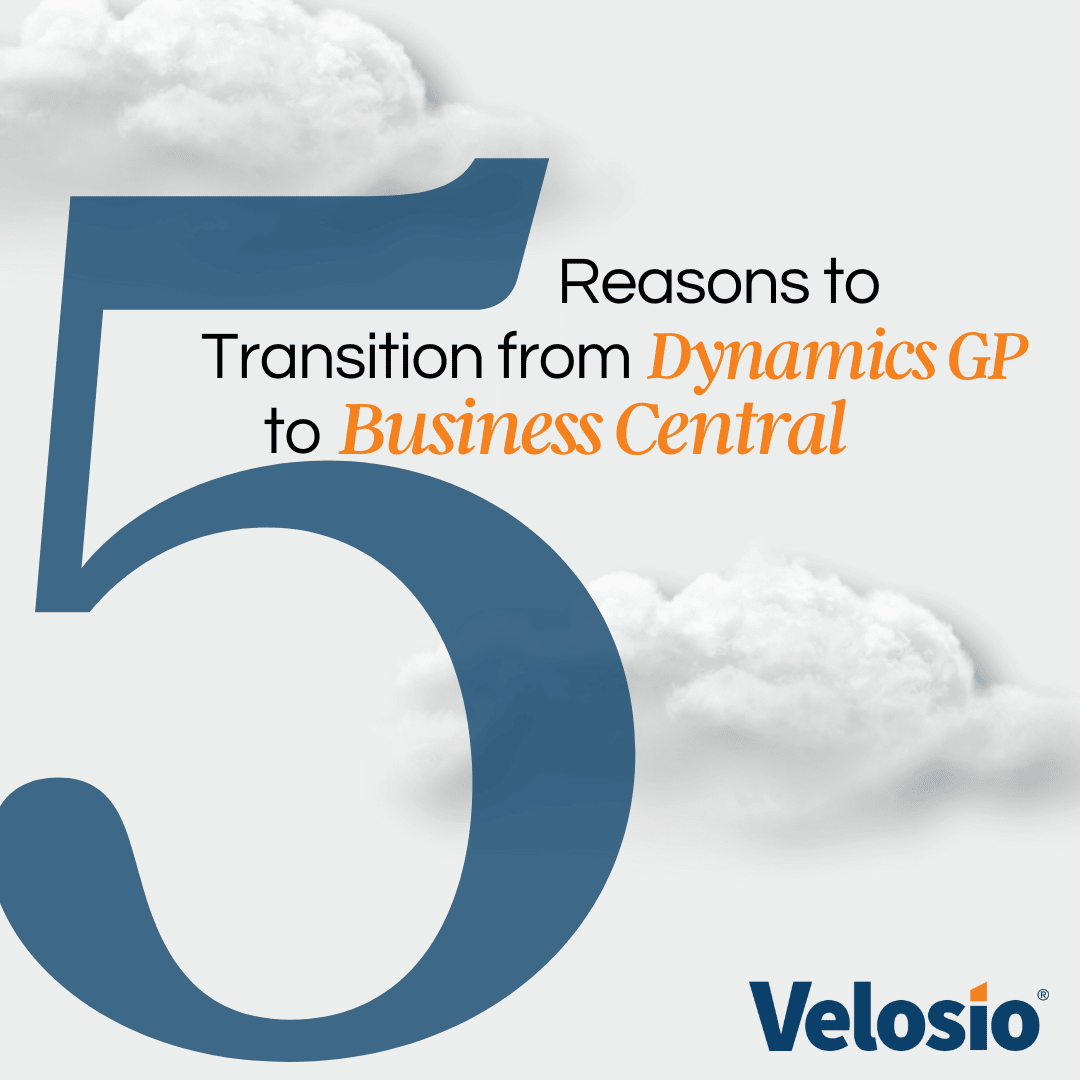5 Reasons to Transition from Dynamics GP to Business Central in the Cloud
Growing companies often realize GP has limitations in keeping up with the pace of business. Learn about the benefits of Business Central.
Table of Content
Dynamics GP has been a great on-premises ERP solution for a long time. But as a legacy software system that’s often powered by outdated hardware, companies tend to find it difficult to improve application performance, ensure business continuity, and reduce IT costs.
Companies also keep running into three challenges that constrain business operations:
Growing companies often discover GP simply has its limitations in keeping up with the pace of business. There’s also not enough flexibility to leverage new technologies, and scaling compute resources to meet customer demands usually takes too long.
As an alternative to Dynamics GP, many companies are migrating to Dynamics 365 Business Central. The ERP platform is similar to GP but offers enhanced capabilities by running in a modern cloud environment. Business Central automatically pulls systems and processes together to enable you to manage financials, sales, service and operations along with the option to connect to third-party systems for payroll, CRM, banking, and industry-specific needs.
Specific areas in which you will find enhancements include project accounting, project management, inventory, warehousing, supply chain management, and service order management. With these capabilities, Business Central offers five primary benefits in comparison to GP:

With Business Central running in the Microsoft Azure cloud, you also benefit from an entire ecosystem of integrated products and technology platforms. This includes easily connecting to other Dynamics 365 solutions to enhance all your customer engagements.
Then there’s the Microsoft Power Platform (Power BI, Power Automate, and Power Apps) to increase your reporting capabilities, set up automated workflows with process approval notifications, and create processes for your unique workflow requirements. In addition, the AppSource store allows you to tap into industry-specific solutions that integrate easily with Business Central. You can even test them first in your environment to make sure they are a good fit.
When comparing the cost of an ERP solution in the cloud versus on-premises, the implementation, customization, and training costs are likely about equal. But there’s a misconception Business Central in the cloud costs more because of the ongoing subscription license costs versus the one-time on-premises license cost of GP.
However, on-premises solutions have additional costs to consider as well. This includes hardware, internal IT support, and software maintenance/upgrades. It’s also more costly to set up technologies that will enable remote work.
Another key consideration is the frequency of application enhancement updates. In the cloud, updates occur usually about every quarter, and because the changes are incremental, your team can adopt them easily and there are no interruptions to daily business operations.
With on-premises, you’re typically limited to major upgrades that occur every 2 or 3 years that require extensive downtime and planning. If a new capability comes out shortly after your initial implementation, you are forced to wait a long time before you can take advantage of it.
If you partner with Velosio to handle your migration from GP to Business Central in the cloud, you can also benefit from getting all your Microsoft support under one roof for an affordable monthly payment. We can quickly access your system for support and enhancements—provided by the same team who designed your system.
We can also support Windows, Office, the entire Microsoft application ecosystem, and your security needs. Our services include proactive monitoring with automatic server backups, antivirus, and server updates during non-busy business times.
With Velosio by your side, you can free up your IT team since they don’t have to support Business Central and the hardware it runs on. Instead, they can focus on your strategic IT needs. Our Microsoft cloud solutions also include a self-service portal where you can request new licenses and increase compute resources as your system requirements grow.
A key factor in the success of your migration from GP to Business Central is to make sure your end-users get the training they need during and after the migration to understand the differences in how Business Central works and what it can do. This will increase user adoption of the solution, which will add to the return on your investment.
It will also be important to conduct an annual system assessment in relation to the current state of your business to see if there are new functions to add or other adjustments. Velosio can consult with you on new technologies you might want to implement as well.